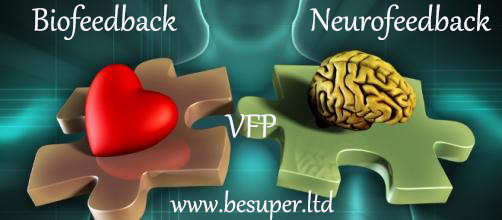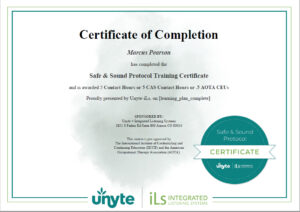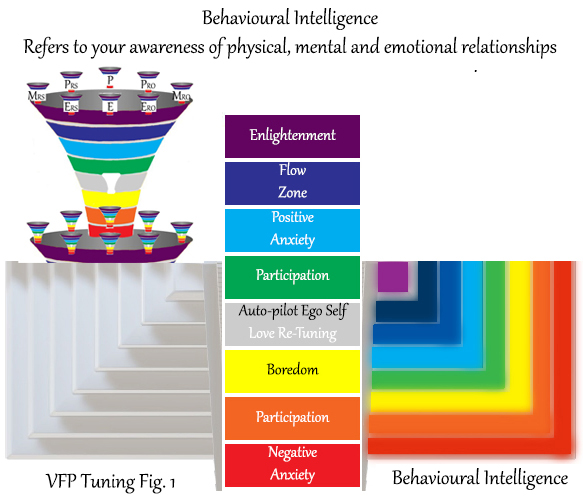More details:
If you are someone with the power to make a decision on whether or not this type of POSITIVE TUNING is worth your time, effort and finances – then taking 5 mins to read this will be worthwhile – PLEASE READ IT ALL . . .
Let’s go a little deeper:
There is a part of our central nervous system known as the vagus nerve which calms us down and regulates our heart rate, essentially serving as a brake pedal for increased movement. For many suffering from trauma or chronic stress this brake does not come on. Using SSP This “vagal brake” can be applied quickly through the use of diaphragmatic breathing – and we teach the client this technique, as part of a self-regulating resilience approach – this often results in an immediate calming response. We do this for free as part of our Quick S-C-P sessions.
Physical exercise / movement is a key part in ‘recognising’ to what extent the ‘vagal brake’ works. For those who have a ‘fully ‘tuned in vagal brake’; then physical exercise / movement will ‘manifest’ itself with more positive and socially co-operative behaviour. For those with a less tuned vagal brake; then exercise / movement will manifest itself as more of a distraction from something else – rather than a pleasant activity in itself.
In practical ‘real life terms’ – the more physical exercise / activity you can do within the control of the ‘ventral vagal brake’ – the better! When you remain calm then you are in what is called ‘state #0 stress’ (no stress) – this state is run by the ‘parasympathetic nervous system’. This state can also be measured and ‘nurtured’ using HRV feedback:
Biofeedback and Neurofeedback:
Biofeedback and Neurofeedback may be used as tools that can be used to measure, track, and assess various factors related to physical, social, emotional and mental readiness, recovery, stress, relaxation and creativity.

Biofeedback relates more specifically to the vibrating frequency of the heart and breathing; whereas Neurofeedback relates more specifically to the vibrating frequencies of the brain.
Those who are more ‘tuned in / experienced / qualified’ also recognize that the Heart & Brain have a closer inter-connection – especially with your true self – your Spiritual Being.
Be Super Ltd (more specifically, the founder – Marcus Pearson) is highly tuned in SPIRITUALLY and qualified as an SSP Therapist with iLS / Unyte. In addition to the 5 hours of CORE SSP we also provide upto 6 months access to SSP Connect and SSP Balance for both children and adults.

Behavioural Intelligence:
With VFP (Vibrational Frequency Programming) from Be Super Ltd, we undertake a UNIQUE VFP ASSESSMENT of someone’s ‘Behavioural Intelligence’ to determine the best support for each individual – this may result in SSP being used, or it may be that other aspects of VFP are experienced before and after the SSP (SSP is only part of the experiencial solution).

When you start to function / slip beyond the ‘ventral vagal brake’ – and the ‘sympathetic nervous system takes over this is initially state #1 stress – and manifests itself with:
- Movement (exercise or fidgeting)
- Mental distraction (work, TV, music, reading, eating etc)
- Addiction or Substances (gambling, sex, alcohol, drugs, eating etc)
Partaking in any of these activities can be positive or negative for the nervous system, and whilst all of them normally reduce the amount of tension/stress – they don’t deal with the cause.
Learning to extend what we call the ‘optimal arousal zone’ – especially at a -sub-conscious level is one of the most significant well-being strategies anyone could follow.
VFP/SSP is suitable for individuals at #0 and #1 states of stress – it is not suitable for those in a #2 or #3 state of stress – (our VFP/HRV experience is more suitable for this – and hopefully calms someone down to the #1 or #0 state so they may benefit from VFP/SSP).
When a human is in a #2 state of stress (fight or flight) this intense ‘over reaction’ can only be maintained for a short period of time (minutes rather than hours). After this short period, the stress is either ‘vented’ (they let it all out by getting very angry or experiencing a panic attack, or running off or shutting themselves away, or the person may become physically explosive to the environment – if the person (normally sub-consciously) feels they are not going to make it through this intense period – then ‘shut down’ may occur.
Shutdown or #3 state of stress involves the sympathetic nervous system still being activated in the remote expectation of emotional fulfilment. This may result in some kind of physical, emotional or mental breakdown / collapse – perhaps a seizure.
Surrender and dissociation of stress – #4 state: This is not unlike a near death experience – where the individual ‘gives up or surrenders to the inevitable’. The individual may appear calm and relaxed, however #4 state of stress occurs when the expectation of any emotional fulfilment has gone! In this state, all the flight or fight options are turned off. The individual essentially has no expectation and feels nothing – complete dissociation. The PNS kicks in to take over and this imposes a FREEZE mechanism in the person – this may manifest as feinting, some form of seizure, being physically sick, urinating or deficating themselves or even going into a coma; it may also result in a heart attack, seizure or sudden death!
For more on these states click here.Setting up the VFP/SSP experience – (for personal face to face supportive sessions) :
An example of how it may be provided is provided below:
- 10 x 30 min 1:1 sessions between the client and Marcus Pearson (+ 30 mins support).
- Each session is on a consecutive day and is set up within a safe and quite environment.
- The safety and reassurance of the environment, within which the Sound experience will take place is critical for success. Cues of safety and trust should prevail, before, during and after the experience. The client should have joint ownership of the choices to provide the feeling of safety. A key part of safety is awareness and knowledge; and the client and their family should have a a short session explaining what the process is all about. This will include an awareness of the different states of ‘connection’ between the client and Marcus Pearson and between the client and their own inner dialogue.
- The sessions start with a short period of learning how to relax / meditate.
- The client will then listen to the sound experience through headphones for 30 mins.
- No distractions will take place. The client may read a book, draw or colour or even do a jigsaw – or undertake all of these during the ‘sound session’.
- After the session the client may engage in pre agreed affirmations (depending on the person’s level of ‘behavioural intelligence’). They are delivered after the acoustic tuning and normally combined with some social, physical exercise – preferably with ‘a peer review’ project. None of this will be excessive; it is more for recovery, further stimulation of the vagal nerve and to assess the results, because – “you have to feel safe in order to communicate to another that you are safe”. This will take no more than 15 mins. Additional supportive information about nutrition, hydration and sleep, together with diaphragmatic breathing, may also be provided to the client and family. All of this supports self-resilience!
The above information is only a guideline – details are arranged on an individual basis.
Click here for details of what is provided for the DISTANCE/ ONLINE ACCESS TO POSITIVE TUNING.
Formal Client Support:
The recognition of behaviour and expected outcomes in relation to the physical, emotional and mental energy fields (behavioural cycle) of the client will be discussed and written down before the experience commences. Ongoing changes will be measured in relation to the initial neuroception and the actual ’emerged properties’. This comparison will be used to measure to what extent the VFP/SSP has been effective. It will also highlight what follow up strategy might best be put in place to maximise continuing progress. This is explained in more detail below:
Our emotional and mental energy fields tune in to the intonation, stress and rhythm of any voices and sounds we hear and the facial expressions we see. This further tunes in to our physical being through the nervous system and manifests in how and why we behave. These ‘energy fields’ are also detected and ‘tuned in to’ by the energy fields of other people.
When our ‘energy fields’ feel safe and trust – for ourselves as an individual or from someone else; they function more appropriately, efficiently and naturally – meaning they need and want less outside support (they want and need to manage on their own).
When our ‘energy fields’ don’t feel safe and trusting; they function less appropriately, less efficiently and unnaturally. During such periods, any additional workload on the physical, emotional and mental energy fields is going to create more harm than good, and may lead to more negativity than positivity. When we seek to apply a ‘cognitive supportive approach’ to someone suffering from trauma and stress (by talking about their problems); then we are often doing so whilst their defensive system is in full swing. This is going to be a long winded and often fruitless endeavour – and is why CBT often lasts for many months or even years. It also explains why this approach is also a little like a ‘fad diet’, in that the ‘problem’ comes back again once you lose the focus. VFP/SSP overcomes this negativity in a different way – by nurturing the autonomic nervous system to self-regulate in a positive manner. It also teaches self-regulation through ‘vagal activation techniques and approaches’.
There is a paradox in supporting those who ‘present as more challenging / distant’:
The paradox is, that whilst we feel compelled to provide more support and help with the ‘additional physical, emotional and mental workload we give them’ (often cognitive); such people need more time for their own nervous system to catch up from the over stimulation they receive whilst going through a period lacking in safety and trust. What they need is to ‘feel more safety and trust in their physical, emotional and mental energy fields – this will then manifest in more positive physical being – THIS IS ACHIEVED BY DOING LESS (less mentally, less emotionally and less physically).
“The VFP/SSP positive tuning experience provided by Be Super Ltd provides safety and prosodic vocalization with an acoustic intervention that carries with it the distilled essence of trust through co-regulated behavioural states. It stimulates a neuro feedback loop, that includes a positive cycle of affirmations, physical activity, ‘vagal self regulation’ (diaphragmatic breathing) and some aspect of creativity for both self and others”.
Marcus Pearson
Working within autonomic constraints:
Our body processes many variables on an automatic basis via our autonomic nervous system.
Our nervous system varies its ‘state of arousal’ and this impacts on ‘spontaneous social behaviour’. Different ‘states of arousal’ are required to manifest for different situations; and each different state is better suited to a different situation. Some states of arousal are more suited for physically active moments; whilst other states of arousal are better suited to more emotional or mental moments – such as social interaction or solving mental problems or being creative.
The most suitable state of arousal for any given moment or ‘state of being’ (physical, emotional or mental) is one that we say has ‘optimal emerging properties’. Each optimal emerging state is a neural platform that is best served to meet that which it feels is needed.
The 3 neural platforms or cycles of evolution include:
- The 1st and most recent one deals with safety. When we feel safe, have trust and are unchallenged then we can be positive, creative and become more socially engaged for the benefit of self and others. (We activate our Parasympathetic Nervous System)
- The 2nd one deals with danger. When we don’t feel safe, trust or are challenged, or when we specifically feel in danger, then we may hide, run away, put up a defensive or fight back.
- The 3rd one deals with life threatening or hopeless situations. When we feel that no matter what we do we are going to be unsafe, challenged and see no future; or a life threatening situation – then we may shut down in some way. This may result in someone feinting or passing out; being physically sick; urinating/defecating; going into a coma; having a heart attack or experiencing a chronic illness or even death.
When we function from the 2nd or 3rd more defensive cycles, then we cannot listen or co-operate effectively to our own multiple beings / energy fields or to the energy fields of others.
What are the top 3 factors that influence our behaviour:
Science and in particular, the clinical studies from Professor Stephen Porges on his Polyvagal Theory, now confirm that the 2 key factors that influence someones ‘expected outcomes’ to what is going on – are:
- the muscles of the human middle ear (through listening) and vocalization and
- activation of the larynx and pharynx (through talking).
A 3rd factor for influencing the ‘expected outcomes/ emerging properties’ is ‘physical activity / movement. When you are mobilized you are at less risk than when you are still or immobilized – this explains why those with challenging behaviour prefer to be active than to sit and show self control. Subsequently, part of the VFP/SSP re-tuning experience from Be Super incorporates some kind of gentle physical activity after the affirmations.
If these 3 key factors are not fully stimulated learning will be inhibited.
SUMMARY OF VFP/SSP RE-TUNING:
“The VFP/SSP re-tuning experience provided by Be Super Ltd provides safety and prosodic vocalization with an acoustic intervention that carries with it the distilled essence of trust through co-regulated behavioural states. It stimulates a neuro feedback loop, that includes a positive cycle of affirmations, physical activity, ‘vagal self regulation’ (diaphragmatic breathing) and some aspect of creativity for both self and others”.
Marcus Pearson
Normal Rates:
Most of the above relates to personal face to face support from our qualified therapist Marcus Pearson.
The normal rates for this are:
£80-£100 for the set up and preparatory consultation plus £400-£500 for the 5 hours SSP delivery and subsequent support (normally a further 5 hours).
These prices are per person, however, during the pandemic, we are offering this as a ‘per household’ fee.
All of the above will be personally managed by Marcus Pearson.
“The Positive Tuning Experience” – has been created by Be Super Ltd as both an Add On and a stand alone experience – it represents our DISTANCE ACCESS/ONLINE FACILITY. This is also personally managed by Marcus Pearson, however, there is no face to face contact – you will communicate via email/whats app or the phone.
Thank you for reading this.
